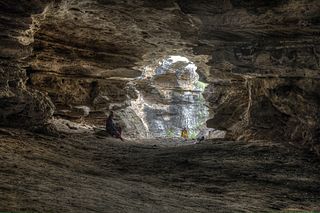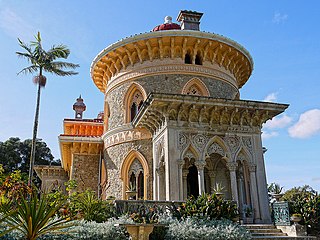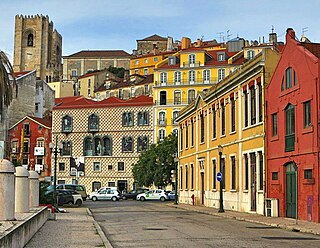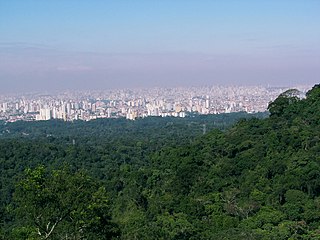
Expo '98 was an official specialised World's Fair held in Lisbon, Portugal from Friday, 22 May to Wednesday, 30 September 1998. The theme of the fair was "The Oceans, a Heritage for the Future", chosen in part to commemorate 500 years of Portuguese discoveries. The Expo received over 10 million visitors in 132 days, while 143 countries and many organizations were represented.

Eldorado is a municipality in the state of São Paulo in Brazil. The population is 15,544 in an area of 1654 km2. Eldorado is one of 29 cities in São Paulo officially recognized as a touristic city, which gives it extra funding.

Ibirapuera Park is an urban park in São Paulo. It comprises 158 hectares between Av. República do Líbano, Av. Pedro Alvares Cabral, and Av. IV Centenário, and is the most visited park in South America, with 14.4 million visits in 2017.

Matinhos is a municipality in Brazil that arose in 1920s. It is considered the "Girlfriend of Paraná" as the date of its emancipation was June 12, Lovers' Day in Brazil.

The Monserrate Palace is a palatial villa located near Sintra, the traditional summer resort of the Portuguese court in the foothills overlooking the Atlantic Ocean north of the capital, Lisbon.

The Ubajara National Park is a national park in the state of Ceará, Brazil. It is the smallest of the 35 national parks of Brazil and is known for the Ubajara grotto.

Avenida da Liberdade is a boulevard in central Lisbon, Portugal, is considered among the most expensive streets to rent or buy property in Portugal. Originating in the Passeio Público, an 18th-century park built for the Portuguese nobility, the avenue was built in 1879, when the former park was turned into a major boulevard, marking the northward expansion of the city during the 19th century. The Avenida is also home to numerous embassies and diplomatic missions.

The Marquis of Pombal Square is an important roundabout in the city of Lisbon, Portugal. It is located between the Avenida da Liberdade and the Eduardo VII Park in the former parish of Coração de Jesus and in the quarter of Santo António.

Uruçuca is a municipality in the state of Bahia in the North-East region of Brazil.

Pontal do Paraná is a municipality in the state of Paraná in the Southern Region of Brazil.
Fontes do Ipiranga Biological Reserve is a biological reserve in the Fontes do Ipiranga State Park in São Paulo State, Brazil.

The Lisbon Book Fair is a book fair held annually in Lisbon, Portugal. It is held at the Eduardo VII Park.

The Furna Feia National Park is a national park in the state of Rio Grande do Norte, Brazil that contains a large cave system.

The Public Promenade was a park in Lisbon, Portugal, that was located where the Avenida da Liberdade is currently laid. Built after the 1755 Lisbon earthquake, the Passeio become an important fixture in the Lisbon landscape in the 19th century and was a meeting point for the upper echelons of Portuguese society.

The Portuguese Riviera is a term used in the tourist industry for the affluent coastal region to the west of Lisbon, Portugal, centered on the coastal municipalities of Cascais, Oeiras and Sintra. It is coterminous with the Estoril Coast and occasionally known as the Costa do Sol. Portuguese themselves do not use this expression.

Lisbon is one of the most popular city destinations in Europe. The city of Lisbon and the Lisbon metropolitan area attracts a significant number of tourists each year, drawn to its historical and cultural heritage, good transportation connections and good touristic infrastructure.

The Estufa Fria is a greenhouse with three distinct gardens located in Eduardo VII Park between the streets Alameda Engenheiro Edgar Cardoso and Alameda Cardeal Cerejeira in Lisbon, Portugal.
The Sumaúma State Park is a small state park within the city of Manaus in the state of Amazonas, Brazil. It is located in the heart of a densely populated neighbourhood, and is threatened by pollution and illegal extraction and hunting.

The Cantareira State Park is a state park in the Serra da Cantareira mountain range, in the state of São Paulo, Brazil. It protects an area of Atlantic Forest to the north of the city of São Paulo. In October 1994, UNESCO declared it part of the São Paulo City Green Belt Biosphere Reserve. The park covers 7,916.52 hectares, being part of Serra da Cantareira, the largest urban green area in the country and one of the largest in the world.

Parque Mayer is a theatrical and entertainment district in the Portuguese capital of Lisbon. Originally created as a summer amusement park, it at one time had four theatres, although one was demolished in 2015 and another has not been used since 1992. Successive proposals have been made for upgrading the area, but none has yet come to fruition.




















